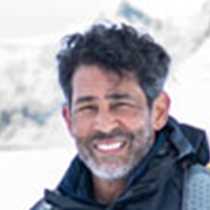We began our explorations in Belize this morning. After a delicious breakfast, one of the rangers from Payne Creek National Park visited to explain a little bit of the history of this important national park. Payne Creek has an extensive mangrove estuary that has built up over time, and it protects the coastline of this part of Belize. Evidence of a Mayan presence has been discovered in the area. The Mayan people inhabited this part of Belize some 1,200 years ago; they practiced fishing and the extraction and distribution of salt. Stone structures and pottery preserve well over time. It is interesting to note that the sea level and lack of oxygen in the ground have helped preserve wooden artifacts in this area, such as a paddleboard. The protection of the endangered yellow-headed parrots is important here. In the afternoon, we had a lot of fun snorkeling in the warm, rich waters of West Snake Caye.
2/4/2024
Read
National Geographic Quest
Monkey River and Laughingbird Caye, Belize
The sun eased above the horizon and gently kissed the calm, mirrorlike sea, greeting National Geographic Quest as she lay at anchor just east of the mouth of Monkey River. This is the largest estuary in southern Belize, and our destination for this morning’s adventure. This winding waterway did not disappoint, as guests enjoyed great views of egrets and herons on the edges of the river, parrots and toucans overhead, while “garobos” — male green iguanas sporting their orange and black breeding colors — sunned themselves on the treetops. After returning to the ship and enjoying a delicious brunch, it was soon time to gear up for a final afternoon of snorkeling and diving off Laughing Bird Caye. Some guests snorkeled among the beautiful coral reefs that surround this small island, while others floated above the corals in kayaks. Everyone savored the tropical flavors of fruit punch and snacks from the hotel department. We finished the day with a slideshow of guest and staff photo memories from our Belize adventure.







